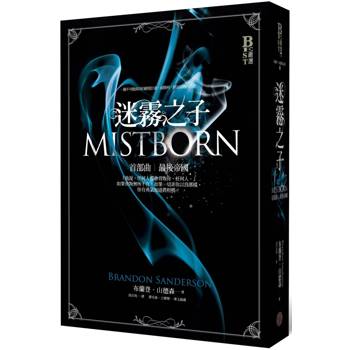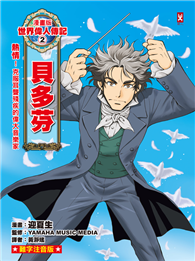| FindBook |
|
有 1 項符合
Venerable Miao Guang and Venerable Juew的圖書 |
 |
$ 225 ~ 238 | Studies on Humanistic Buddhism IV Human Life 人間佛教研究論文選
作者:黃凱、楊本華等人合著 / 譯者:Venerable Miao Guang and Venerable Juew 出版社:佛光 出版日期:2021-11-19 語言:繁體書  共 5 筆 → 查價格、看圖書介紹 共 5 筆 → 查價格、看圖書介紹
|
|
|
圖書介紹 - 資料來源:博客來 評分:
圖書名稱:Studies on Humanistic Buddhism IV Human Life 人間佛教研究論文選
內容簡介
Volume four of Studies on Humanistic Buddhism contains eight translated articles, two commentaries, two original articles, and a perspective piece all relating to human life. Human life is a topic with a vast scope. It was chosen because it is central to Humanistic Buddhism. As several articles in this volume and previous volumes discuss, Humanistic Buddhism developed as a response to the perception that Buddhism no longer related directly to human life. By the nineteenth century in China, Buddhism was seen to provide what came to be mainly perfunctory rituals to be performed upon the death of a family member. Humanistic Buddhism revived Buddhism as an intrinsic part of daily life.
目錄
Editor’s Preface
PAPERS
Venerable Zhu Mo 竺摩法師: The Relationship between Buddhism and Life 佛教與人生的關係
Tan Jie 譚潔: Venerable Master Hsing Yun’s Perspective on Humanistic Buddhism’s Life Education 星雲大師人間佛教的生命教育觀
Lee Chih-Ying 李芝瑩: Recrafting Role Models: A Discussion of the Contemporary Application of Buddhist Life Education Through the Comic—The Ten Great Disciples 典範重塑— 從《畫說十大弟子》 談佛教生命教育的當代實踐
Huei Kai Shih 慧開法師: A Modern Interpretation of Venerable Master Hsing Yun’s Belief that “Life Does Not Die”星雲大師人間佛教信念「生命不死」 的現代詮釋
Zheng Xiaojiang 鄭曉江: Buddhism and Hospice Care 佛教與臨終關懷
Chen Yi Biao 陳一標: Objectively Validating the Practice of Humanistic Buddhism 人間佛教實踐的客觀化
Liu Chengyou 劉成有: The Value of the Buddhism Practiced by Fo Guang Shan 佛光山佛教實踐的當代價值
Han Cheng-cai 韓成才: The Concept of Wealth in Venerable Master Hsing Yun’s Humanistic Buddhism 試論星雲大師人間佛教財富觀
Bee Scherer: Human World Buddhism at Fo Guang Shan: Localising Anthropocentric Dharma
Yu Sang: The Buddhist Nationalism in Master Fafang’s Thought 1
Nadine Levy and Suzanne Franzway: Perspective: The Teacher and Late Modern Buddhism in the West: Commitment and Dilemmas
COMMENTARIES
D.E. Osto: Commentary: Loving-Kindness and Compassion
Darui Long: Commentary: Yang Renshan, a Living Bodhisattva
APPENDICES
Venerable Master Hsing Yun 星雲大師: Appendix: Loving-Kindness and Compassion
Venerable Master Hsing Yun 星雲大師: Appendix: Yang Renshan, a Bodhisattva
PAPERS
Venerable Zhu Mo 竺摩法師: The Relationship between Buddhism and Life 佛教與人生的關係
Tan Jie 譚潔: Venerable Master Hsing Yun’s Perspective on Humanistic Buddhism’s Life Education 星雲大師人間佛教的生命教育觀
Lee Chih-Ying 李芝瑩: Recrafting Role Models: A Discussion of the Contemporary Application of Buddhist Life Education Through the Comic—The Ten Great Disciples 典範重塑— 從《畫說十大弟子》 談佛教生命教育的當代實踐
Huei Kai Shih 慧開法師: A Modern Interpretation of Venerable Master Hsing Yun’s Belief that “Life Does Not Die”星雲大師人間佛教信念「生命不死」 的現代詮釋
Zheng Xiaojiang 鄭曉江: Buddhism and Hospice Care 佛教與臨終關懷
Chen Yi Biao 陳一標: Objectively Validating the Practice of Humanistic Buddhism 人間佛教實踐的客觀化
Liu Chengyou 劉成有: The Value of the Buddhism Practiced by Fo Guang Shan 佛光山佛教實踐的當代價值
Han Cheng-cai 韓成才: The Concept of Wealth in Venerable Master Hsing Yun’s Humanistic Buddhism 試論星雲大師人間佛教財富觀
Bee Scherer: Human World Buddhism at Fo Guang Shan: Localising Anthropocentric Dharma
Yu Sang: The Buddhist Nationalism in Master Fafang’s Thought 1
Nadine Levy and Suzanne Franzway: Perspective: The Teacher and Late Modern Buddhism in the West: Commitment and Dilemmas
COMMENTARIES
D.E. Osto: Commentary: Loving-Kindness and Compassion
Darui Long: Commentary: Yang Renshan, a Living Bodhisattva
APPENDICES
Venerable Master Hsing Yun 星雲大師: Appendix: Loving-Kindness and Compassion
Venerable Master Hsing Yun 星雲大師: Appendix: Yang Renshan, a Bodhisattva
|










